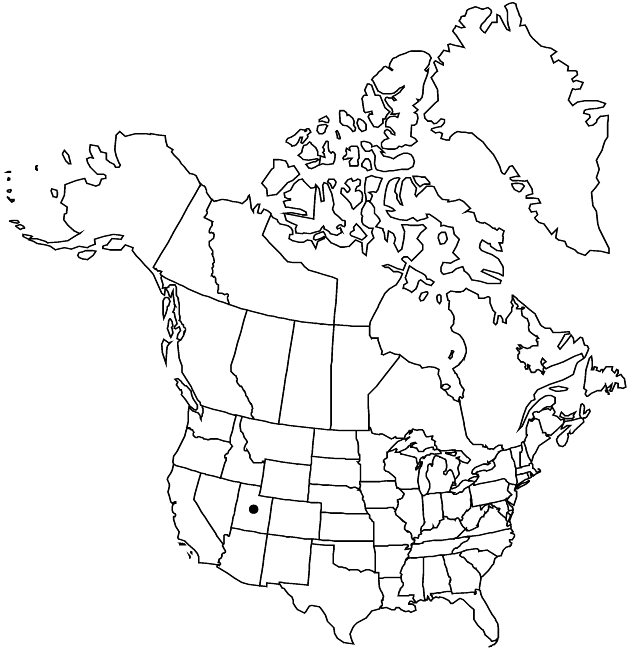Herrickia kingii var. barnebyana
Sida 21: 898. 2004.
Common names: Barneby’s aster
Endemic
Basionym: Machaeranthera kingii var. barnebyana S. L. Welsh & Goodrich Brittonia 33: 299, fig. 5. 1981
Synonyms: Aster kingii var. barnebyana (S. L. Welsh & Goodrich) S. L. Welsh Tonestus kingii var. barnebyana (S. L. Welsh & Goodrich) G. L. Nesom
Revision as of 21:18, 29 July 2020 by imported>Volume Importer
Leaves (at least some basal and proximal) irregularly serrate. Ray-florets white. 2n = 18.
Phenology: Flowering summer–early fall.
Habitat: Rocky slopes and cliff crevices in mountains, in Quercus-Cercocarpus and other forest communities, on Precambrian quartzite substrate
Elevation: 2200–2700 m
Discussion
Of conservation concern.
Variety barnebyana is known from the Canyon Mountains and Mt. Nebo in the Wasatch Mountains (Millard and Juab counties). It is of conservation concern in Utah (R. Spahr et al. 1991).
Selected References
None.
Lower Taxa
None.
"thick" is not a number."full" is not a number."[" is not declared as a valid unit of measurement for this property."]" is not declared as a valid unit of measurement for this property.
... more about "Herrickia kingii var. barnebyana"
introrse +
connate +
distinct +
herbaceous +
acute;long-acuminate +
hirsute +
papillate +
corymbiform +
continuous +
sheathing +
attenuate +
indurate +
1-nerved +
oblanceolate;spatulate +
reduced +
firm +
ribbed +
stigmatic +
barbellate +
yellowish +
persistent +
6 cm60 mm <br />0.06 m <br /> (?) +
35;70 +
unequal +
absent +
branched +
woody +
Barneby’s aster +
absent +
ampliate +
8-10-nerved +
brown +
dimorphic +
2.5mm;3.5mm +
staminate +
reduced +
0;1/6 +
Utah. +
straight +
eglandular +
scabrellous +
distinct +
proximal +
1;5 +
bisexual +
dispersed +
Rocky slopes and cliff crevices in mountains, in Quercus-Cercocarpus and other forest communities, on Precambrian quartzite substrate +
indeterminate +
1;5 +
surrounding +
hemispheric-campanulate +
serrate +
alternate +
marcescent +
erect;spreading +
lanceolate +
? (?) +
scarious +
2-carpellate +
inferior +
attached +
anatropous +
persistent +
stipitate-glandular +
tough +
thick +
absent +
connate +
1-nerved +
purplish +
persistent +
distinct +
falling +
unequal +
Sida +
2004 +
pistillate +
white +
absent +
fertile +
epaleate +
pitted +
flat;slightly convex +
fibrous +
exalbuminous +
modifed +
4;5 +
Endemic +
alternate +
erect +
long-stipitate-glandular +
scabridulous +
lanceolate +
2-branched +
glabrous +
Herrickia kingii var. barnebyana +
Herrickia kingii +
variety +
spinulose +
apiculate to more +
slightly longer +
maturity +
perennial +
cespitose +
dwarf +
subshrub +
foliaceous +
truncate +
green +
1/2;2/3 +
